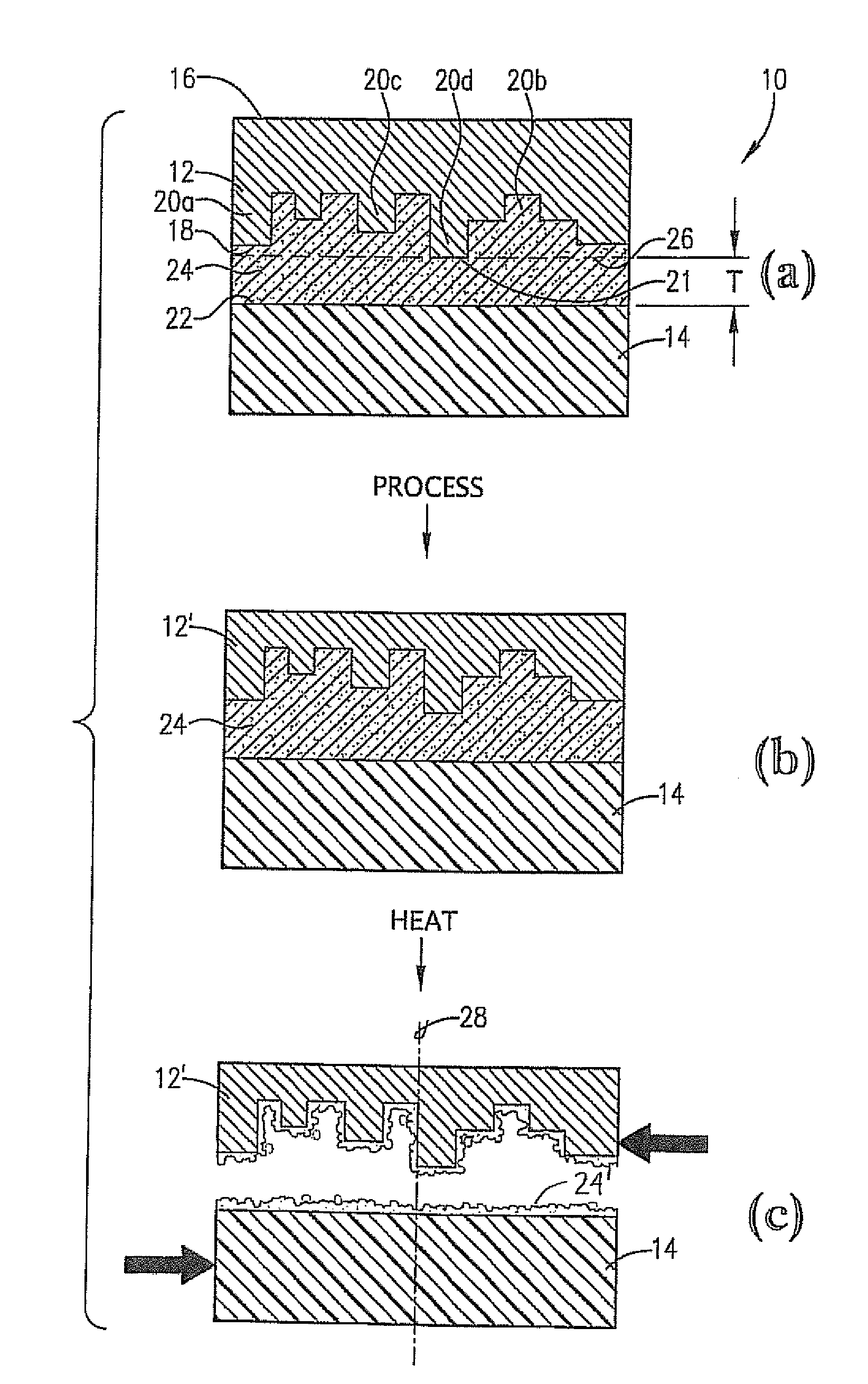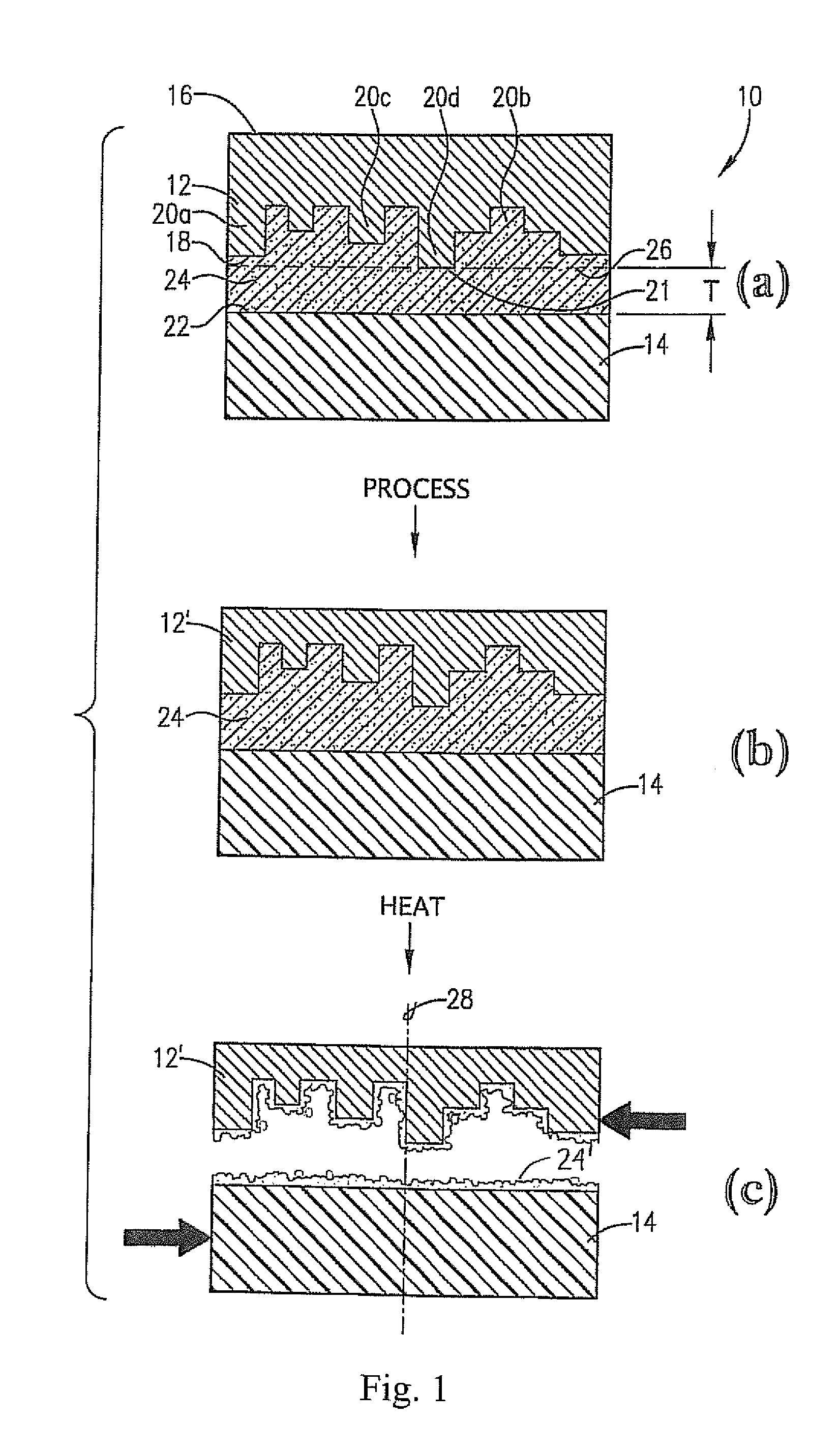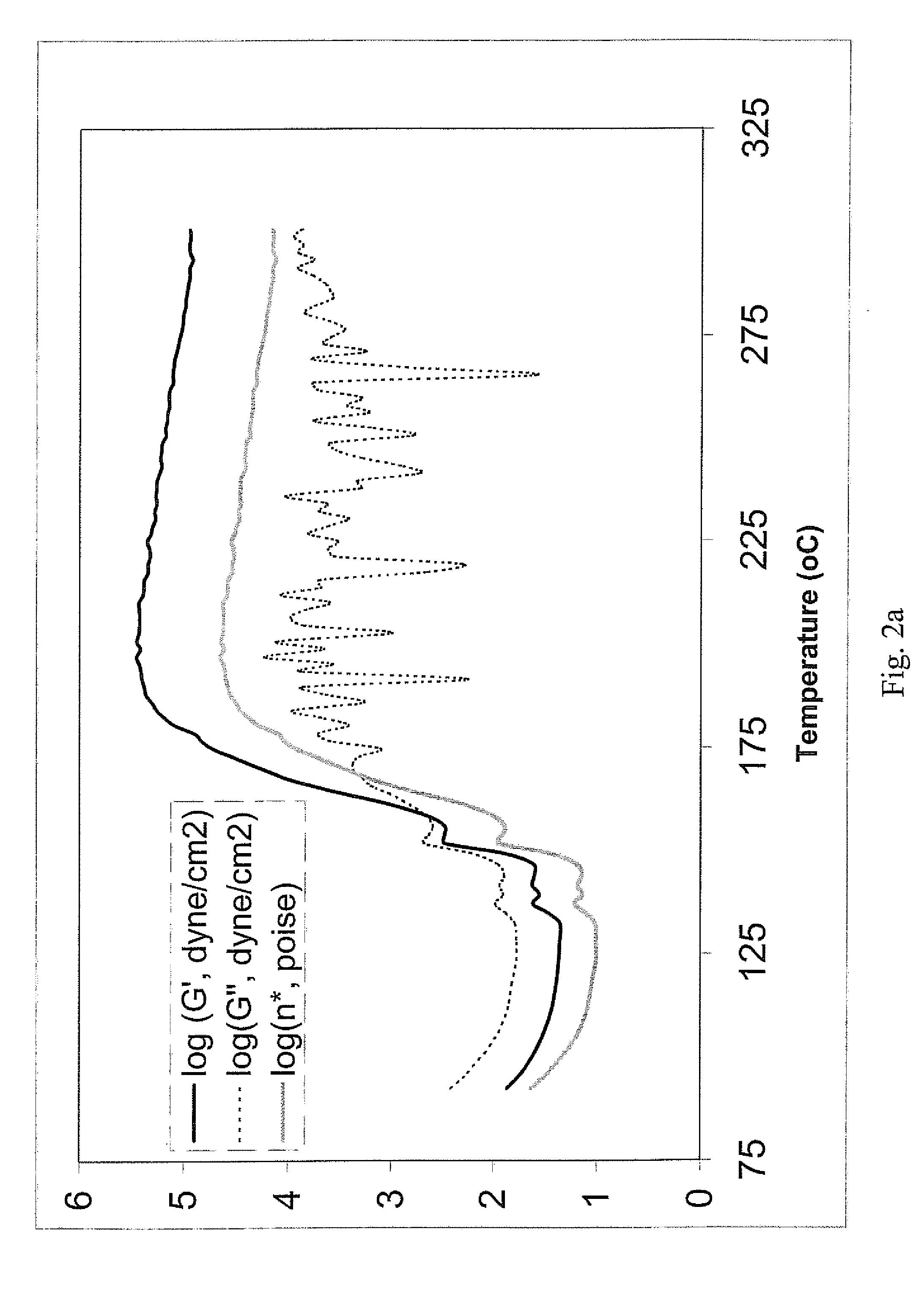Thermally decomposable spin-on bonding compositions for temporary wafer bonding
a technology of spin-on bonding compositions and compositions, which is applied in the direction of semiconductor devices, solid-state devices, semiconductor/solid-state device details, etc., can solve the problems of increasing capacitance, requiring thicker transmission lines, and large ic footprin
- Summary
- Abstract
- Description
- Claims
- Application Information
AI Technical Summary
Problems solved by technology
Method used
Image
Examples
example 1
Spin-Applied Bonding Composition Based on Crosslinking Oxazoline Groups with Bisphenol Moieties
[0059]To make this formulation, 37.73 grams of poly(styrene-co-isopropenyl oxazoline) (trade name: EPOCROS RPS-1005; Nippon Shokubai Co. Limited, Osaka, Japan) were dissolved in 83 grams of PGMEA, and 35 grams of PGME. Next, 0.2 gram of 4,4′-sulfonyldiphenol (obtained from Aldrich, Milwaukee, Wis.), 2 grams of Irganox 1010 (obtained from Ciba Specialty Chemicals, Tarrytown, N.Y.), 1.24 grams of triphenylphosphine (obtained from Aldrich, Milwaukee, Wis.), and 30 grams of γ-butyrolactone (obtained from Aldrich, Milwaukee, Wis., USA) were added to this solution.
[0060]The formulation was spin-coated onto a device or carrier wafer at different speeds ranging from 500-3,000 rpm to achieve thickness values ranging from 2.5-15 μm. The wafer was baked at 150° C. to remove the solvent. After the solvent evaporated, the supporting or carrier wafer (either glass or silicon) was attached to the coated ...
example 2
Spin-Applied Bonding Composition Based on Crosslinking Oxazoline Groups with Bisphenol Moieties
[0061]Poly(styrene-co-isopropenyl oxazoline) in the amount of 37.73 grams of was dissolved in 83 grams of PGMEA and 35 grams of PGME. Next, 0.4 grams of tetrabromobisphenol-S (obtained from Shanghai Rongheng Co. Limited, Shanghai, China), 2 grains of Irganox 1010, 1.24 grams of triphenylphosphine, and 30 grams of γ-butyrolactone were added to this solution.
[0062]The formulation was spin-coated onto a device or carrier wafer at different speeds ranging from 500-3,000 rpm to achieve thickness values ranging from 2.5-15 μm. The wafer was then baked at 150° C. to remove the solvent. After the solvent evaporated, the supporting or carrier wafer (either glass or silicon) was attached to the coated wafer by applying bonding forces between 3,000-5,000 N at 205° C. for 3-5 minutes. After backgrinding, metallization, and other processing steps such as dielectric cure involved in wafer thinning, the ...
example 3
Spin-Applied Bonding Composition Based on Crosslinking Oxazoline Groups with Bisphenol Moieties
[0063]Poly(styriene-co-acrylonitrile-co-isopropenyloxazoline) was synthesized by free radical polymerization using α,α′-azoisobutyronitrile (AIBN, obtained from Aldrich, Milwaukee, Wis.) as the initiator. This terpolymer is more thermally stable than poly(styrene-co-isopropenyloxazoline). Next, 2.5 grams of bisphenol-S and 0.2 gram of triphenylphosphine were added to 20 grams of the terpolymer.
[0064]The formulation was spin-coated onto a device or carrier wafer at different speeds ranging from 500-3,000 rpm to achieve thickness values ranging from 2.5-15 μm. The wafer was baked at 150° C. to remove the solvent. After the solvent evaporated, the supporting or carrier wafer (either glass or silicon) was attached to the coated wafer by applying bonding forces between 3,000-5,000 N at 205° C. for 3-5 minutes. After backgrinding, metallization, and other processing steps such as dielectric cure...
PUM
| Property | Measurement | Unit |
|---|---|---|
| Temperature | aaaaa | aaaaa |
| Fraction | aaaaa | aaaaa |
| Thickness | aaaaa | aaaaa |
Abstract
Description
Claims
Application Information
 Login to View More
Login to View More - R&D
- Intellectual Property
- Life Sciences
- Materials
- Tech Scout
- Unparalleled Data Quality
- Higher Quality Content
- 60% Fewer Hallucinations
Browse by: Latest US Patents, China's latest patents, Technical Efficacy Thesaurus, Application Domain, Technology Topic, Popular Technical Reports.
© 2025 PatSnap. All rights reserved.Legal|Privacy policy|Modern Slavery Act Transparency Statement|Sitemap|About US| Contact US: help@patsnap.com



